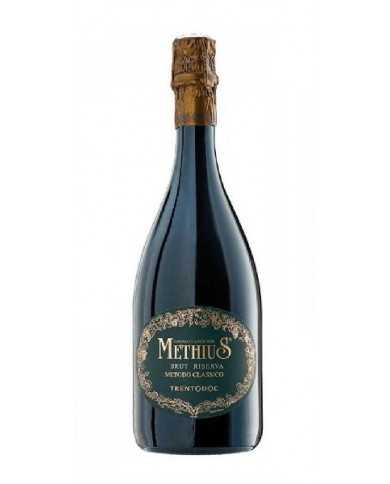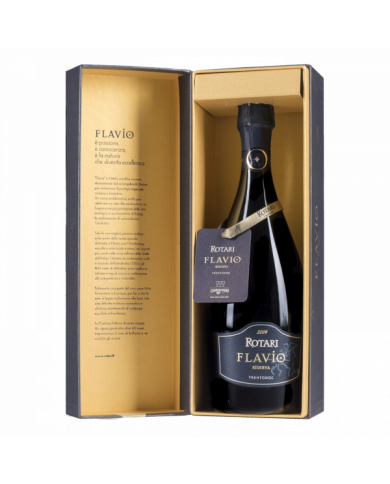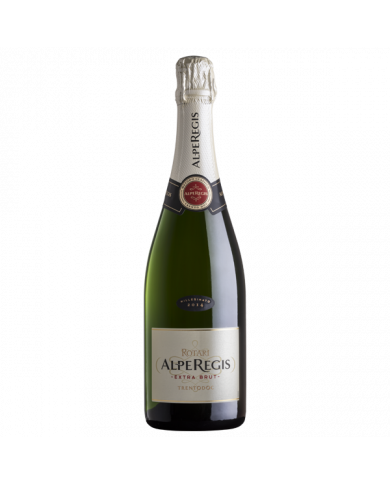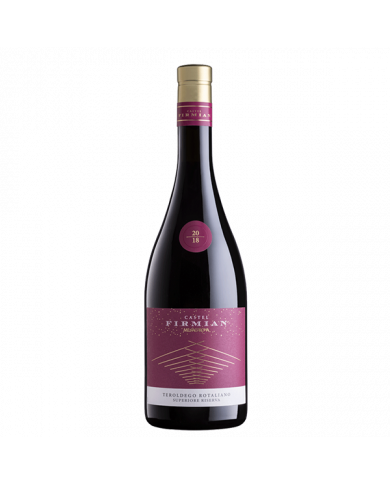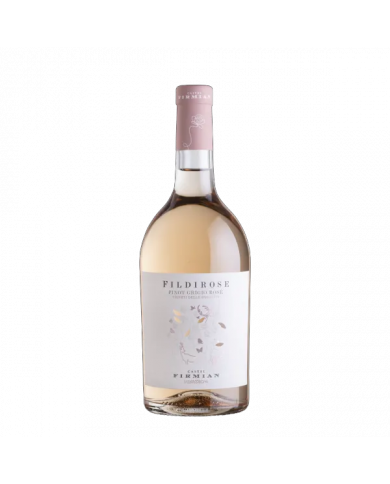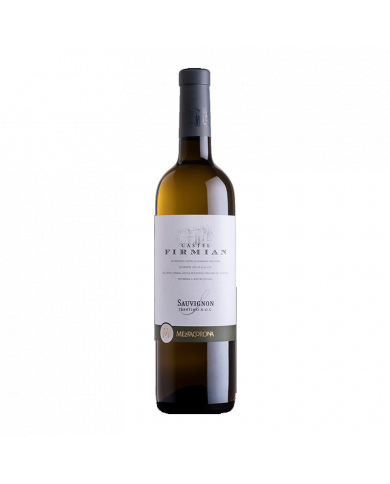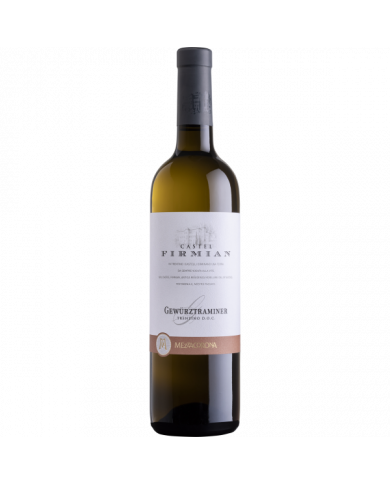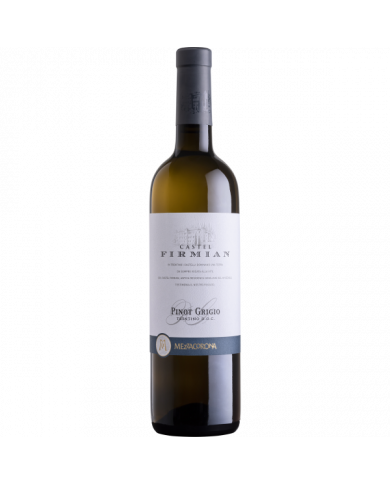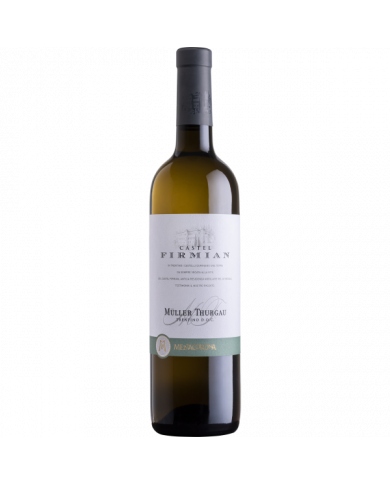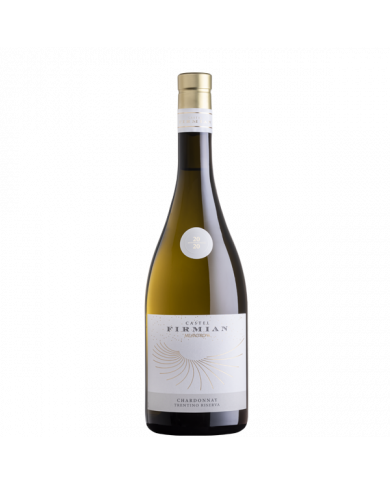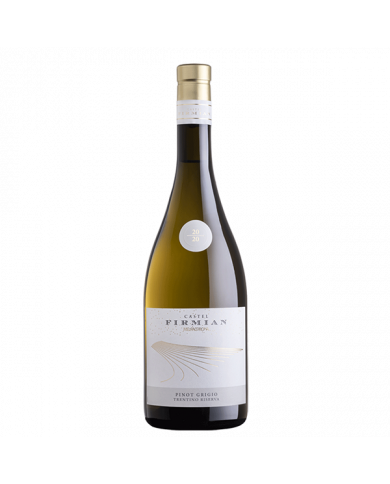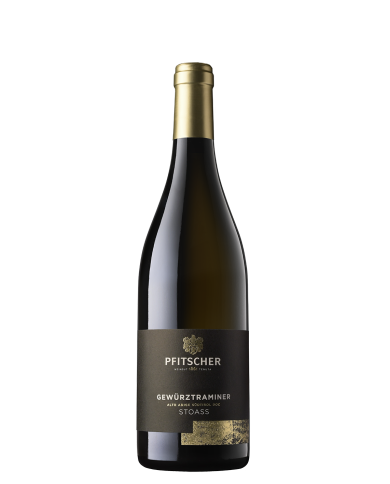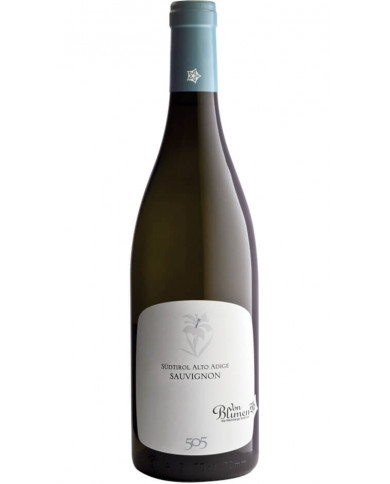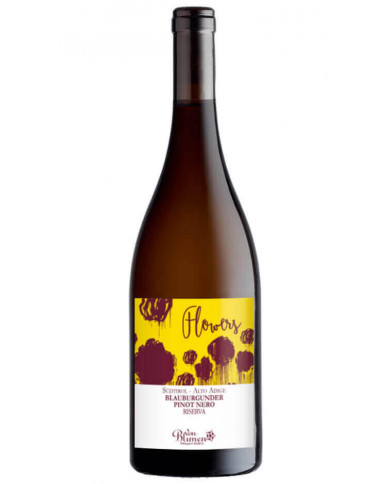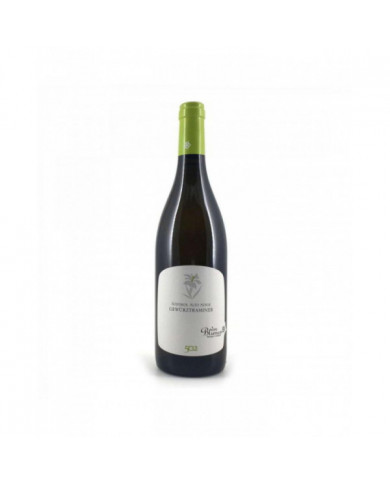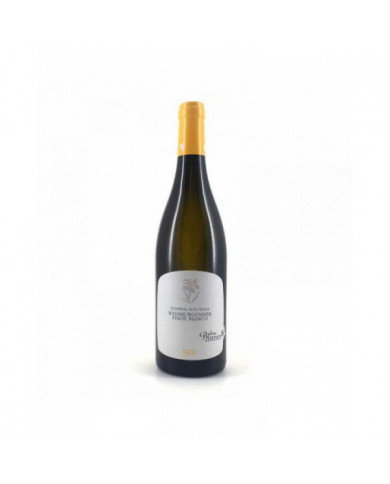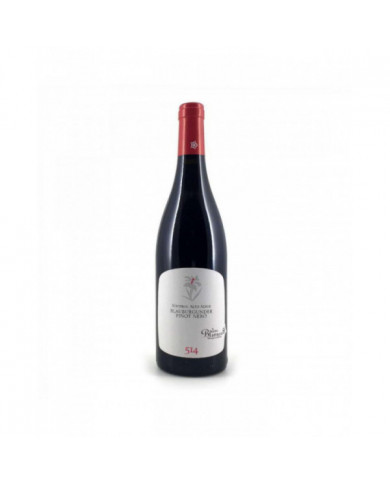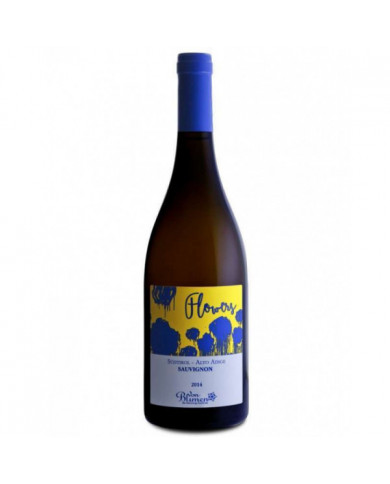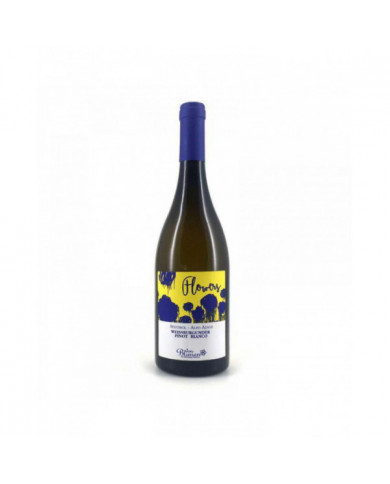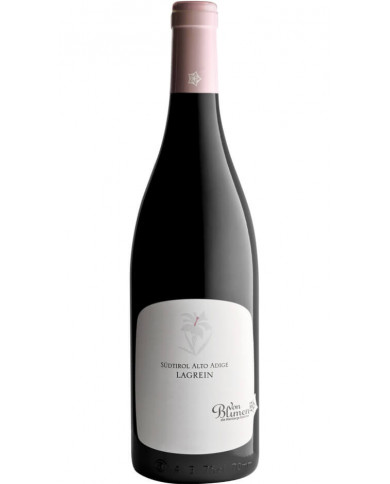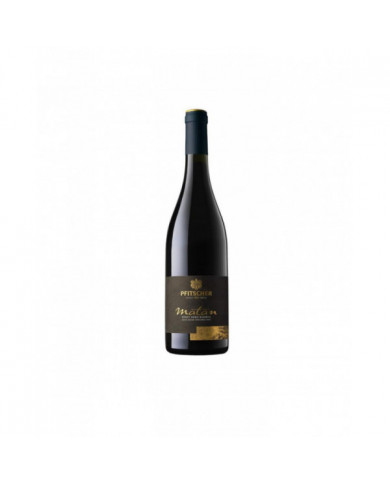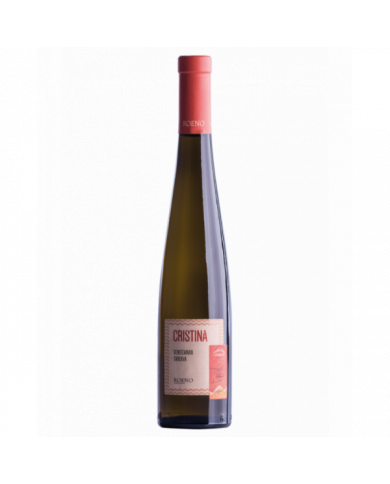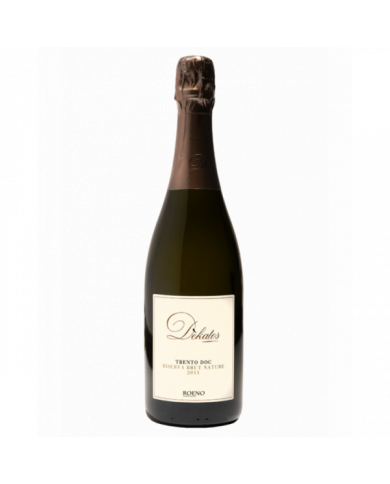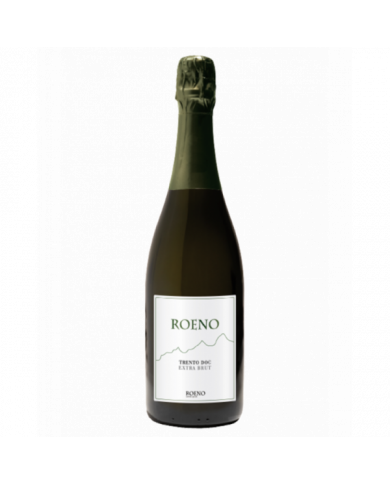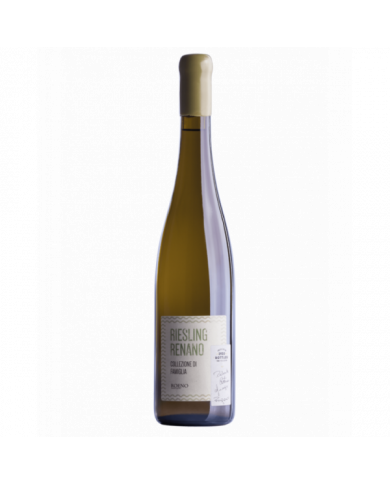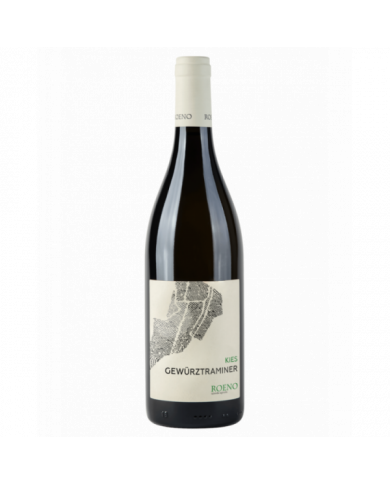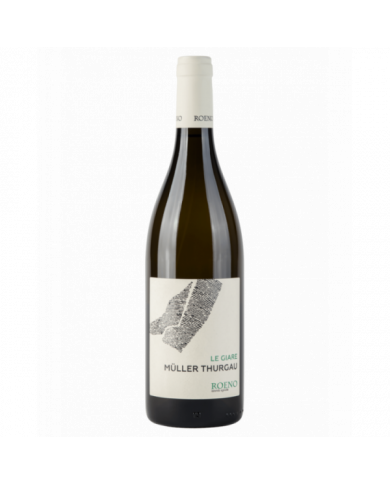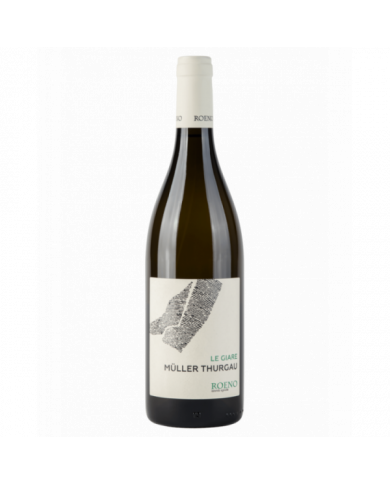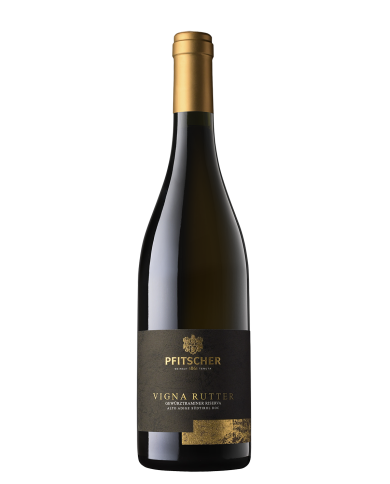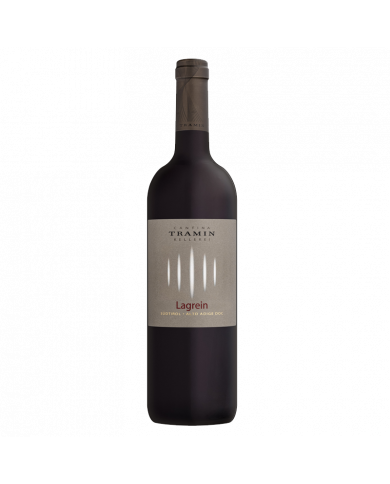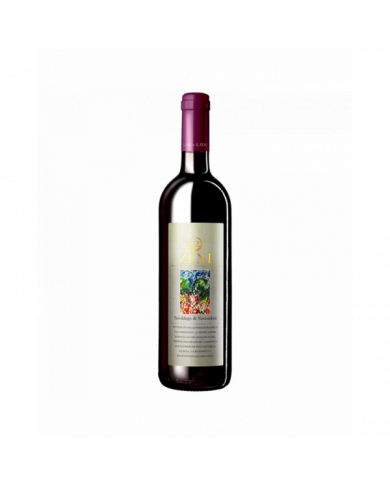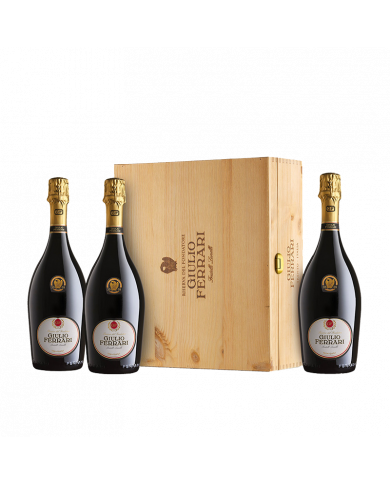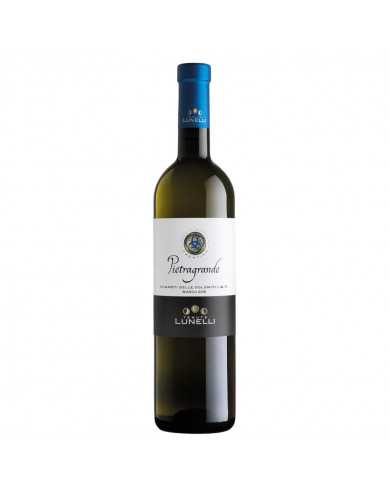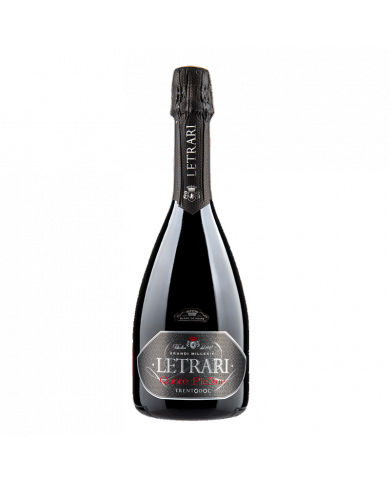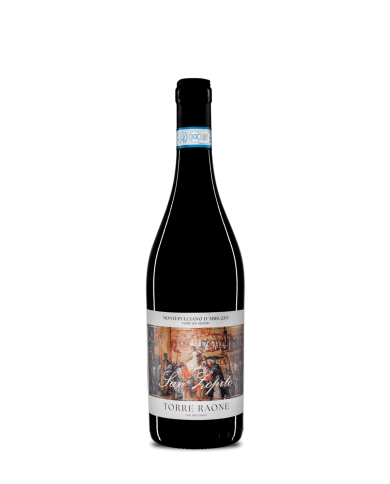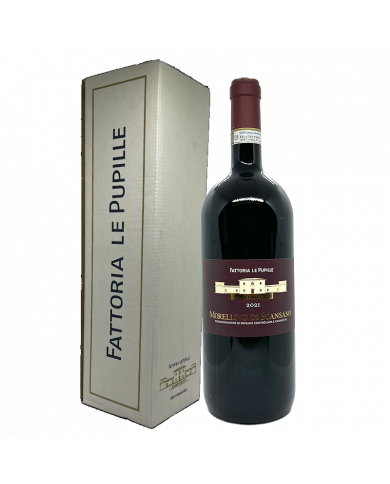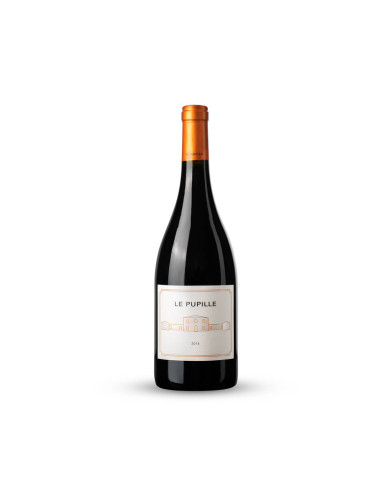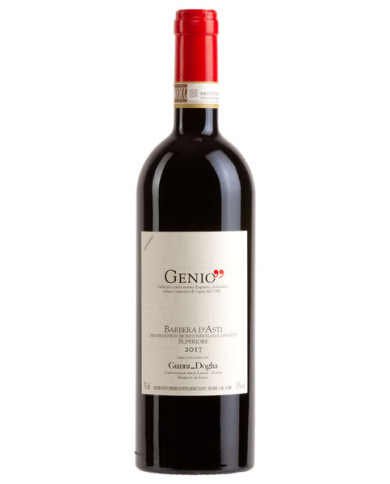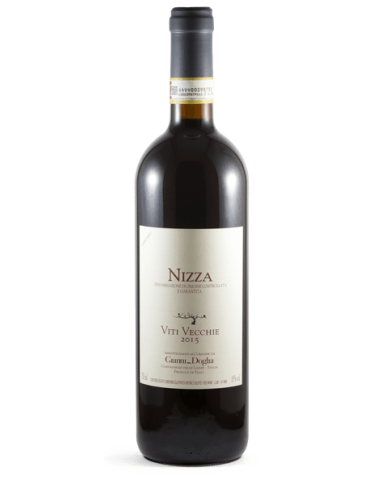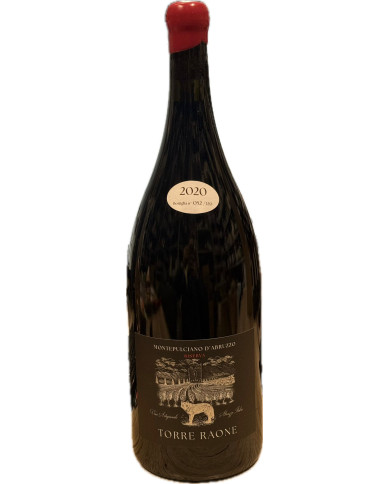Il Trentino ÃĻ una terra indubbiamente vocata alla produzione di basi spumanti. Se si aggiunge una produzione artigianale e rispettosa delle tradizioni ecco che si ottiene TRENTODOC, ovvero il metodo classico trentino.ÃĻ da questi presupposti che nel 1986 nasce METHIUS TRENTO DOC grazie all'amicizia tra due amici enologi: Carlo Dorigati ed Enrico Paternoster. Il Trento Doc Methius ÃĻ prodotto solo nella tipologia riserva, a sottolineare la qualità eccelsa di questo prodotto e la sua unicità . La cantina d'invecchiamento, ubicata a Mezzocorona (Trentino), risale ai primi del 1900, ÃĻ completamente interrata e costruita con i "volti a botte" quasi tutti in pietra squadrata. Qui le bottiglie di Methius sostano per 60 mesi, a temperatura e umidità pressochÃĐ costanti tutto l'anno. Il nome "Methius" deriva dalla ricerca di un toponimo locale che accomuna l'origine del prodotto aziendale al territorio di nascita. L'etimo del nome scelto si perde nella storia. Si sa che già nel 1150 (Principe Vescovo e Mainardo II conte di Tirolo) il nome delle due borgate site nella "Piana Rotaliana" erano: Methius Coronae (oggi Mezzocorona) e Methius Sancti Petri (oggi Mezzolombardo) ove il radicale comune "Methius" deriva dal celtico e latino volgare.
It is produced with 100% Chardonnay grapes, rigorously harvested and selected by hand. The first fermentation, which takes place partly in steel and partly in barrique, is followed by 5 months refinement in the same containers and second fermentation, by refermentation in the bottle, with a full 5 years refinement on its own yeasts.
AlpeRegis Trentodoc is born from the best Trentino sparkling wine tradition combined with the winemaking style of Rotari , a special vintage dedicated to lovers of good food and good living. The name evokes the royal figure of Rotari and a strong reference to the Alpine territory which has contributed to making Rotari legendary by setting his deeds in history. AlpeRegis is a Millesimato produced exclusively from Chardonnay grapes, an international variety that has found the ideal conditions in the Dolomites area for the perfect expression of its character, rigorously harvested by hand, selecting the best bunches directly in the vineyard. Maturation on the lees for at least 48 months.
The Teroldego vine is a native variety of Trentino and finds its ideal development environment in the Piana Rotaliana. The word "Teroldego" seems to derive from "Tiroler Gold" (gold of Tyrol), the name by which this wine was indicated at the Court of Vienna during the Austro-Hungarian empire; from this denomination âTiroldicoâ would later derive and later, Teroldego. Among the Trentino red wines it is the most renowned, so much so that it is defined as the "prince wine of Trentino". The Riserva di Teroldego is produced only in great vintages from carefully selected grapes by hand in the most suitable areas of the Piana Rotaliana: "Fron", "Rauti", "Camorzi" and "Sottodossi". The grapes are pressed with separation of the stems. The seeds are partially removed, followed by maceration on the skins with frequent pumping over and fermentation at a controlled temperature of around 25°C for 12-13 days. Minimum 24 months of maturation, of which 12 in precious oak wood (Allier and Troncais) followed by refinement in the bottle.
This wine comes from the selection of Pinot Grigio vineyards located at the foot of the hills of the Adige valley where the soil rich in silt and dolomitic rock favors an excellent aromatic ripening of the grapes and the maintenance of a correct level of acidity and freshness.
Sauvignon Blanc is the white berried variety to which we owe some of the most popular dry white wines in the world. On the medium hills that accompany the course of the Adige river, characterized by strong temperature variations, this variety has found a particularly favorable microclimate providing a wine with distinctive aromatic notes. Traditional vinification with brief contact on the skins to ensure maximum conservation and transmission to the wine of the varietal aromas characteristic of the grape. Fermentation at controlled temperature (16-18°C).
Typical Central European vine, it has spread in Trentino expressing its characteristic aroma. Thanks to the care of the Mezzacorona members and the alpine climate, it best expresses the strong charge of fragrances, sapidity and balance. Traditional vinification with brief contact on the skins to ensure maximum conservation and transmission to the wine of the varietal aromas characteristic of the grape and fermentation at low temperatures (16-18°C).
Produced only with grapes from its own vineyards along the Adige Valley, at the foot of the Dolomites. It has compact bunches with very sweet gray-blue berries. It stands out for its characteristics of balance, finesse and elegance. The vinification is traditional with brief cold contact on the skins to increase the structure and richness of the wine and subsequent fermentation at a controlled temperature (18-20°C).
Produced only with grapes from its own vineyards in the medium-high hills of the Cembra Valley. It comes from the vine of the same name obtained in 1882 by the researcher Hermann MÞller in the Swiss town of Thurgau from the cross between the Rhine Riesling and Chasselas varieties. The vinification is traditional with brief contact on the skins to ensure maximum conservation and the transmission to the wine of the varietal aromas characteristic of the grape. Subsequent fermentation at controlled temperature (18-20°C).
The Chardonnay Riserva comes from a selection of the best vineyards grown on the slopes of the Trentino mountains between 250 and 500 m above sea level. The preferred soils are of alluvial and draining origin. The grapes are harvested well ripe and characterized by a golden yellow colour, an indication of high aromatic richness. The skilful blending of wines obtained from vineyards located at various altitudes and with different exposures results in a wine that is ripe and rich but also fresh and fragrant. The grapes are harvested in September, partly subjected to cold maceration to increase the extraction of aromas and subsequently subjected to soft pressing. The must is fermented with the addition of selected yeasts, half in steel and half in lightly toasted French oak. The wines mature for 8 months in wood and 4 months in steel. The part that ages in barrique also carries out the malolactic fermentation and repeated batonage (resuspension of the fermentation yeasts) is carried out. Finally, 3-4 months of aging in the bottle follow.
The Pinot Grigio variety has been cultivated for a long time in the Adige Valley, where it is also known under the name of RulÃĪnder. The shape of the bunches and their "copper gray" color reveal its close relationship with the Pinot Noir from which it seems to derive. It prefers soils with moderate fertility both on the valley floor and on low hills. Pinot Grigio RISERVA comes from grapes grown in the vineyards of one of the most classic and suitable areas for this variety: called "Zablani", it is located north-east of the town of Mezzocorona and is characterized by well-drained alluvial soil, very similar to that of the adjacent classic area of Teroldego. The grapes are harvested by hand and delivered within a few hours to the cellar, where they are selected, immediately pressed and sent to the cold maceration and soft pressing stage. The alcoholic fermentation at a controlled temperature (16-18° C) can last between 12 and 15 days. More precisely, part of the Pinot Grigio is fermented in steel (40%) while the remaining 60% is fermented in barrique. After fermentation, the wine remains in barriques for 6-8 months, during which periodic "batonage" operations are performed (resuspension of the yeast deposits). Between the 10th and 11th month, the wine fermented in steel and the wine fermented in wood are assembled, thus obtaining a product with the typical notes of vanilla and ripeness, but also with the freshness and fragrance typical of Pinot Trentino grey.
For more than a century this vine, originally from France and precisely from the Loire Valley area, has been grown on the hills of Alto Adige. The grape harvest takes place by hand, as in the past, starting from the beginning of September. After a gentle destemming, the grapes undergo a short cold maceration in a stainless steel press. The alcoholic fermentation takes place in steel tanks at a controlled temperature. At the end of alcoholic fermentation, the wine is kept in contact with the lees, in stainless steel containers for about 6 months. The Sauvignon has a yellow color with light green reflections. On the nose the scent is fresh, with extravagant hints of nettle, pepper, tomato leaves and anise. On the palate the flavor is intense and persistent with a good aroma and a savory and gritty acidity. A versatile goblet that goes perfectly with all courses at the table and after the first sip it will take you back to the unspoiled nature on the slopes of Monte Corno.
The Pinot Noir grape variety is considered among the most noble red grape varieties in the world and also the most difficult to interpret. The origin of this vine is believed to be attributed to the French region of Burgundy. Flowers is the name chosen by the winery to represent the spearheads of the Von Blumen project. Harvested in September, the grapes are then partially de-stemmed and crushed, and left to ferment with maceration on the skins in stainless steel tanks at a controlled temperature, for about 20 days. Subsequently, before bottling, it is aged for 12 months in French oak tonneaux. In the glass the color is a bright ruby red. The bouquet is intense and broad on the nose, ranging from sweet nuances of red and black fruits to fragrant spicy scents. On the palate it is enveloping and complex, with a mature and long-lasting tannic texture in the mouth. A wine of exceptional drinkability and character, excellent in combination with red meat dishes, medium and long-aged cheeses and traditional main courses of South Tyrolean cuisine.
The name Traminer appears for the first time in 1349 in Konrad Megenberg's "Book of Nature". The origins of this vine are uncertain; some believe they are in Alsace, others in the town of Termeno (Bolzano), still others in Wurttemberg, and finally in the Reno valley. The grapes are harvested manually in boxes. After a delicate destemming, cold maceration follows at a temperature of 12°. The alcoholic fermentation takes place in steel tanks at a controlled temperature; at the end of alcoholic fermentation, the wine is kept in contact with the lees, in stainless steel containers for about 6 months. In the glass it has an intense straw yellow color. On the nose, the aroma is intense and varied with aromas ranging from yellow pulp fruits, lychee, rose, acacia flowers and saffron. On the palate it immediately proves to be a wine of great structure and balance based on sapid and fresh notes, supported by a never invasive softness and characterized by delicious almond nuances. An eclectic goblet that is excellent on the table as an aperitif or to accompany shellfish dishes, ethnic cuisine and spicy flavours.
The Pinot Noir grape variety is considered among the most noble red grape varieties in the world and also the most difficult to interpret. The origin of this vine is believed to be attributed to the French region of Burgundy. The grape harvest is manual, as it was once done. After a delicate destemming and crushing, fermentation follows with maceration on the skins in stainless steel tanks at a controlled temperature. To extract color and aroma from the skins, several pumping overs are carried out and finally the maturation takes place in large wooden barrels. In the glass the color is a pale ruby red. The nose is intense and seductive with notes of raspberry, cherry, blackberry, violet and various spices. On the palate it is warm and enveloping, with lively notes of undergrowth. Thanks to its harmony, bringing this Pinot Noir to the table with red meat dishes, medium and long-aged cheeses and stewed fish will be a guaranteed success.
For more than a century this vine, originally from France and precisely from the Loire Valley area, has been grown on the hills of Alto Adige. The grape harvest takes place by hand, as in the past, starting from the beginning of September. After a gentle destemming, the grapes undergo a short cold maceration in a stainless steel press. The alcoholic fermentation takes place in steel tanks at a controlled temperature. At the end of alcoholic fermentation, the wine is kept in contact with the lees, in stainless steel containers for about 6 months. The Sauvignon has a yellow color with light green reflections. On the nose the scent is fresh, with extravagant hints of nettle, pepper, tomato leaves and anise. On the palate the flavor is intense and persistent with a good aroma and a savory and gritty acidity. A versatile goblet that goes perfectly with all courses at the table and after the first sip it will take you back to the unspoiled nature on the slopes of Monte Corno.
Production notes Pinot Bianco ''Flowers'' is a white wine aged for 10 months in tonneaux. Malolactic fermentation can be total or partial. Tasting notes Pinot Bianco ''Flowers'' is a straw yellow white wine with green transparencies. Perfumes of white flowers and flint with vegetal notes in the background. Fresh and mineral taste of ripe pineapple, sage and anise.
Pinot Noir Matan grows in the most prestigious areas in Montagna for this vine. Thanks to the terroir, this wine is characterized by character, elegance, delicacy and aromatic notes. The considerable temperature range between day and night, which characterizes the ripening phase of the grapes, makes this robust dark red wine, with an aroma of wild berries, particularly structured.
La Vendemmia Tardiva Cristina was born to try to achieve the perfect balance. The softness and sweetness above all at the beginning are striking, which subsequently fades more and more into a note of great elegance.
Dekatos is above all a Classic Method of substance and inspiration, transforming it into the identity of the territory. Dekatos is a Classic Method with a long permanence sur lie, over one hundred months to connote and chisel a unique style. Dekatos breathes the art and the wind of the Trentino latitudes, where the vocation for the great Classical Methods has made it possible to write important pages within the history of Italian winemaking.
TRENTO DOC EXTRA BRUT. Roeno Trentodoc was born from an ambitious project of the Roeno winery, a vintage, synonymous with style and elegance.
First vintage produced: 2010 vintage Average number of bottles produced: 3500 bottles c. It was born because: the Fugatti family has always been in love with this unique and sensorially unrepeatable vine. During many climatically different harvests, small batches of grapes from the most suitable parcels were isolated, with the aim of better understanding their expressive potential and understanding their evolution after prolonged refinement. The results of this long experimentation led to the birth, with the 2010 vintage, of a different Riesling, conceived to raise the value and uniqueness of this extraordinary vine to the utmost excellence.
wine of great balance based on savory and fresh notes, supported by a great softness, excellent structure and important aromatic persistence.
The MÞller-Thurgau Frizzante di Roeno is a fresh white wine excellent to drink on warm summer evenings. At sight it has a straw yellow color
Pfitscher's GewÞrztraminer Riserva comes from a single selected vineyard, "Rutter", at an altitude of 300 meters above sea level in Egna.
A long winter postponed the awakening of the vine to early April. A drop in temperatures after budding also delayed flowering. Subsequently, the weather remained capricious with a hot June and a humid July which laid the ideal foundations for the start of the maturation. August showed its best side with sunny weeks and exceptionally low night temperatures. Despite some brief downpours at the end of September/beginning of October, the harvest, which began with a delay of approx. ten days than usual and characterized by clearly lower than average volumes, it was marked by numerous warm days and increasingly colder nights.
Intense ruby red colour. The nose is fragrant with an overflowing fruitiness of ripe cherries. On the palate it is warm and intriguing, with a pleasant sensation of softness. Serving temperature 12°-14°C.
Brilliant yellow with slight golden reflections, with a very fine and persistent perlage. The nose reveals a bouquet of rare intensity and fragrance in which the fruit is in perfect harmony with the hints of honey, combined with notes of white chocolate, spices and citrus. On the palate it is elegant and harmonious, with a velvety and composite body: the fragrances of honey, acacia and ripe hay are well combined with floral notes. The impact is noble and of great persistence. Splendid throughout the meal, Ferrari recommends pairing it with mozzarella in a carriage or with a large fish soup.
Pietragrandeâ is a Trentino white wine produced by Tenuta Margon and perfectly represents a mountain white. Born from mountain vineyards in the most suitable areas of Trentino, this label is an assembly of Chardonnay, Sauvignon Blanc, Incrocio Manzoni and Pinot Bianco aged for 6 months in steel tanks. The color is light yellow with bright reflections and the fragrances are reminiscent of white wild flowers, citrus fruits, wild herbs and light tropical notes. The taste is lively, flowing, sapid and with a mineral finish
Bright in its golden color, it has an immediate aromatic profile that is somewhat turgid, with notes of plum, but also quince, tea and a vague reminiscence of ginger.
Discover the excellent wines of Trentino-Alto Adige: A journey through the precious traditions of this region!
Located in the northeastern corner of Italy, Trentino-Alto Adige is known for its unique wine excellences. The region is known for its fine wines, ranging from sweet whites to full-bodied reds, and for its treasured winemaking traditions that have developed over the centuries. If you are a wine lover or a tourist looking for a unique experience, exploring the excellent wines of Trentino-Alto Adige is certainly an activity not to be missed.
The history and winemaking traditions of Trentino-Alto Adige
The winemaking traditions of Trentino-Alto Adige date back to the times of the Roman Empire, when this region was an important producer and merchant of wine. Today, the region is still a major producer of fine wines, thanks to its diverse climates, quality soils, and long history of winemaking.
Over the centuries, the winemaking traditions of Trentino-Alto Adige have been influenced by various peoples who have colonized the region, such as the Celts, the Lombards and the Byzantines. Most of the wines produced in the region were influenced in some way by these peoples, and the winemaking traditions of Trentino-Alto Adige have remained intact ever since.
The main grape varieties of Trentino-Alto Adige
Trentino-Alto Adige is rich in local grape varieties, each with its own unique characteristics and tastes. The grape varieties most commonly grown in the region are MÞller-Thurgau, Pinot Blanc, GewÞrztraminer, Lagrein, Pinot Noir and Schiava. Each of these grape varieties produces a unique wine, characterized by notes of fruit, spices, herbs and honey.
Trentino-Alto Adige is also known for its sweet wines, such as Schiava, a slightly sweet red wine variety, and GewÞrztraminer, a sweet white wine with exotic fruit notes. These wines are ideal to combine with cheese-based dishes, cold cuts and fish-based dishes.
How to visit the cellars of Trentino-Alto Adige
If you are interested in visiting the cellars of Trentino-Alto Adige, there are many ways to do it. You can take part in an organized tour, in which an expert guide will accompany you to discover the excellent wines of the region. Alternatively, you can always organize an independent visit to the cellars of the region, tasting the fine wines and savoring the unique atmosphere of Trentino-Alto Adige.
An experience not to be missed
Exploring the excellent wines of Trentino-Alto Adige is a unique experience. The region is rich in history, culture and winemaking traditions that have been passed down from generation to generation. Take some time to visit the cellars and taste the fine wines of the region: it will be an unforgettable experience!
Wines from Trentino-Alto Adige
Trentino-Alto Adige is a region in northern Italy known for its mountainous landscapes, castles and fine wines. Some of the most renowned wines in Italy are produced here, thanks to the geographical position of the region and the particular climatic conditions. In this article, we will explore the wines of Trentino-Alto Adige , their characteristics and their curiosities.
Trentino-Alto Adige is located on the border with Austria and Switzerland, and is divided into two autonomous provinces: Trento and Bolzano. The region is mountainous and extends from the Alps to the border with Austria. The climate is influenced by the north winds and the surrounding valleys, creating a unique environment for the production of wines.
History of wine production in Trentino-Alto Adige
The production of wine in Trentino-Alto Adige dates back to Roman times, when the first vineyards were cultivated in the area. Over the centuries, winemaking has been influenced by many different cultures, including German and Austrian. This has resulted in the production of a variety of unique wines, which have gained an international reputation.
Characteristics of the wines of Trentino-Alto Adige
The wines of Trentino-Alto Adige are known for their elegance, lively acidity and balance. The grape varieties grown in the region are mainly white, such as Pinot Blanc, Chardonnay, Sauvignon Blanc, GewÞrztraminer and MÞller-Thurgau. However, red grapes such as Schiava, Lagrein and Teroldego are also very popular.
The best wines of Trentino-Alto Adige
One of the most famous wines of Trentino-Alto Adige is Pinot Grigio, a dry white wine with a fresh and fruity flavour. GewÞrztraminer is another fine white wine, with spicy notes and an intense aroma. As for red wines, Teroldego Rotaliano is one of the best. It is a red wine with an intense flavor and a deep ruby colour.
The production of wine in Trentino-Alto Adige
The production of wine in Trentino-Alto Adige is a very careful and scrupulous process. The region has many wineries, large and small, who work with passion to produce the best wines. Many of these wineries are family-run and use traditional production techniques.
Soils and climatic conditions
The Trentino-Alto Adige region is characterized by an alpine climate, with cool summers and cold winters. The soils are mainly rocky and rich in minerals, which favors the production of high quality wines. Furthermore, the surrounding valleys create microclimates which influence the ripening of the grapes and the flavor of the wines.
The denominations of origin of the wines of Trentino-Alto Adige
The wines of Trentino-Alto Adige are protected by various designations of origin, including Trento DOC , Alto Adige DOC and SÞdtirol DOC. These denominations guarantee the quality and origin of the wines, and represent an important promotional tool for the region.
The food-wine pairing
The wines of Trentino-Alto Adige go perfectly with the local cuisine, which is influenced by Austrian and Italian traditions. White wines go well with fish-based dishes, fresh cheeses and vegetable-based first courses. The red wines go well with red meat, wild boar and game dishes.
Curiosities about the wines of Trentino-Alto Adige
The wines of Trentino-Alto Adige are full of interesting curiosities. For example, Moscato Rosa, a sweet and aromatic wine, is only produced in certain areas of the region. Furthermore, GewÞrztraminer is a very fragrant wine, with notes of exotic fruit and spices, which go well with Asian cuisine.
The wines of Trentino-Alto Adige represent a heritage of great value for Italy. The region offers a great variety of fine wines, thanks to its geographical position and particular climatic conditions. The production of wine is a careful and scrupulous process, which involves many family-run wineries. The wines of Trentino-Alto Adige go perfectly with the local cuisine and are an excellent choice for those who want to discover the authentic flavors of the region.
FAQs
What are the main grape varieties grown in Trentino-Alto Adige?
The main grape varieties grown in Trentino-Alto Adige are Pinot Bianco, Chardonnay, Sauvignon Blanc, GewÞrztraminer and MÞller-Thurgau.
What are the best red wines of Trentino-Alto Adige?
The best red wines of Trentino-Alto Adige are Teroldego Rotaliano, Schiava and Lagrein.
What are the denominations of origin of the wines of Trentino-Alto Adige?
The denominations of origin of the wines of Trentino-Alto Adige are Trento DOC , Alto Adige DOC and SÞdtirol DOC.
How do Trentino-Alto Adige wines go well with food?
White wines go well with fish-based dishes, fresh cheeses and vegetable-based first courses, while red wines go well with red meat, wild boar and game dishes.
What are the curiosities about the wines of Trentino-Alto Adige?
There are many curiosities about the wines of Trentino-Alto Adige, for example Moscato Rosa is produced only in some areas of the region, while GewÞrztraminer goes well with Asian cuisine thanks to its spicy notes.

